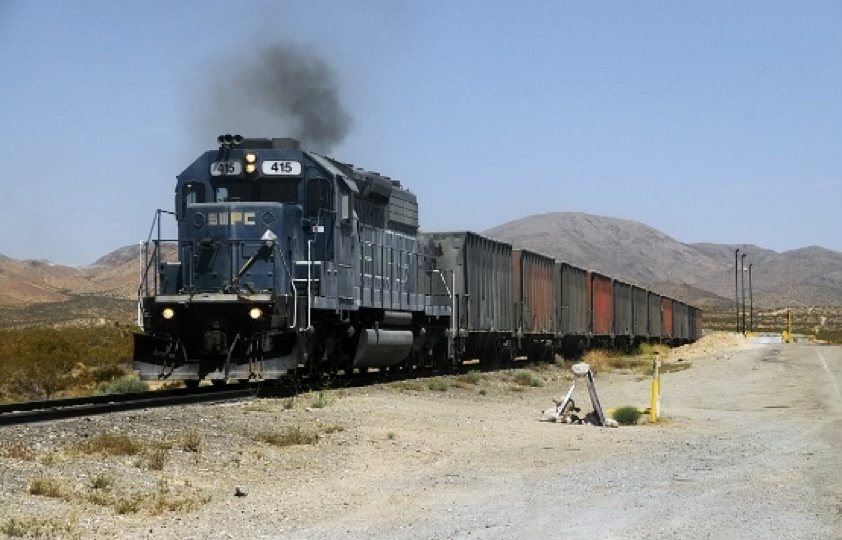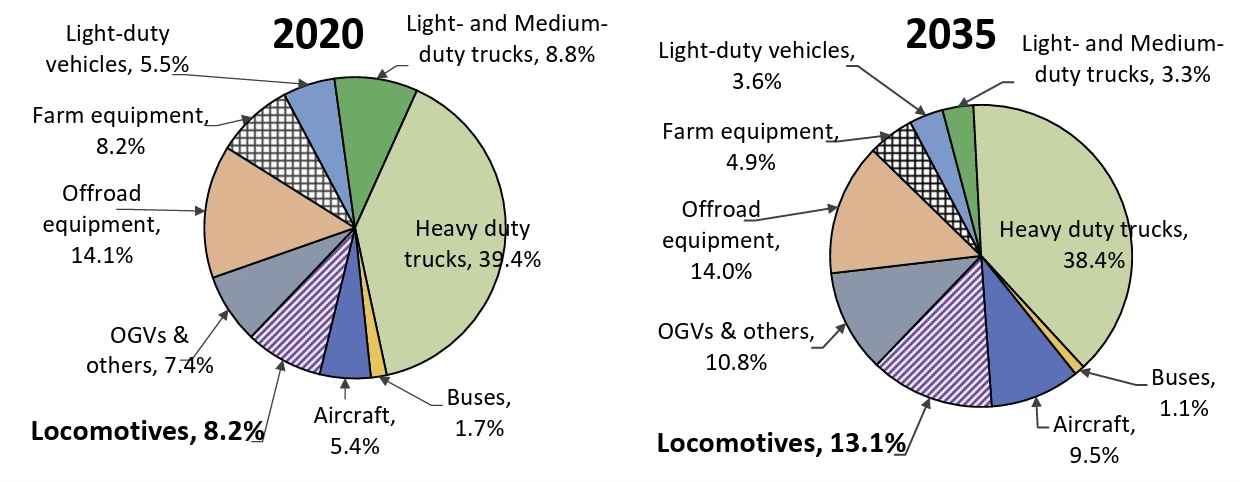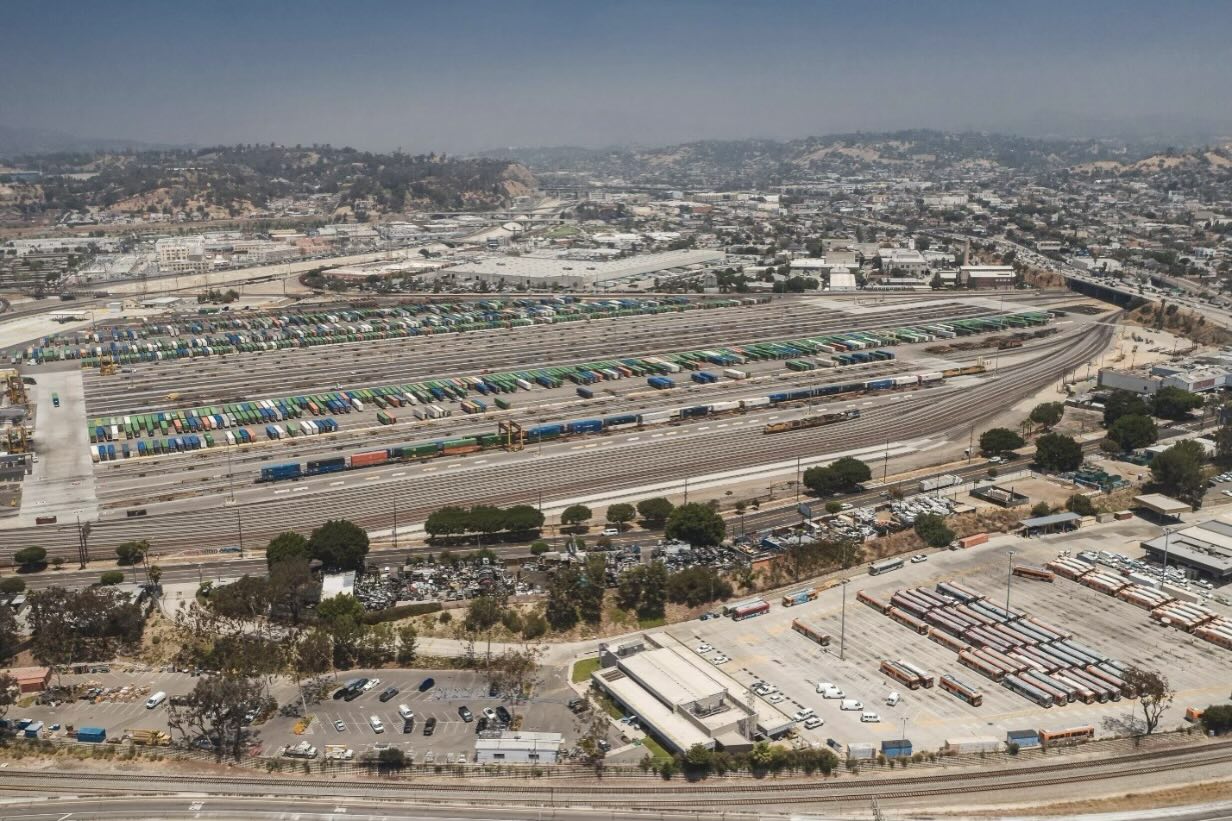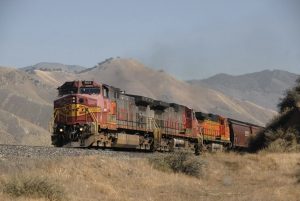
On Thursday – June 26th 2025, the California Air Resources Board (CARB) took a step that many in the environmental and public health communities had hoped would never come: it formally repealed the In-Use Locomotive Regulation—a landmark rule that promised to reduce some of the dirtiest emissions in California’s freight system. We know of no other instance in its proud history when CARB entirely repealed an important safeguard.
The regulation, adopted in April 2023 after years of development and public input, was designed to phase out old, high-polluting locomotives and replace them with cleaner, modern engines or zero-emission technologies. The rule would have delivered dramatic cuts in fine particulate matter (PM₂.₅), nitrogen oxides (NOₓ), and greenhouse gas emissions—while also bringing long-overdue relief to frontline communities living near railyards and freight corridors.
Now, all of that is off the table.
A Timeline of Progress—and Reversal
CARB began drafting the In-Use Locomotive Regulation in late 2020. The goal was simple: to hold rail companies operating in California accountable for the pollution from their fleets, especially older diesel locomotives running near homes, schools, and businesses. The regulation was approved in April 2023, with the support of CCA and many other advocates, and submitted to the U.S. Environmental Protection Agency (EPA) for authorization, as required under the Clean Air Act.
But EPA never acted on the petition, and in January 2025 CARB withdrew its authorization request because of likely resistance from the incoming Trump administration. The decision meant that the rule could not be enforced. With little hope of implementation, CARB moved to settle litigation that had been brought by the large railroads and repeal the rule.
What California Is Losing
The numbers are staggering. Had the rule gone into effect, it would have:
- Reduced PM₂.₅ pollution by 7,390 tons by 2050 (a 79% cut compared to BAU).
- Cut NOₓ emissions by 386,283 tons (a 77% drop).
- Prevented 21.6 million metric tons of greenhouse gases from entering the atmosphere.
- Delivered $32 billion in public health benefits at a cost of $13.8 billion—a net gain of $18 billion.
Most of these benefits would have been felt in low-income, predominantly Black, Latino, and Asian communities—places like Commerce, San Bernardino, and West Oakland—where rail lines and railyards are tightly woven into the urban fabric.
In many of these neighborhoods, trains still run on pre-Tier 0 locomotives, which emit as much pollution as 1,319 heavy-duty trucks per year. In fact, 71% of the switchers and industrial locomotives operating in California fall into this outdated, high-polluting category.
CARB’s own studies have shown that without action, by 2040, trains traveling 20–300 miles inland from ports like San Pedro will emit 177% more NOₓ and 230% more PM₂.₅ than zero-emission trucks.
NOx Emission Contribution by Sector in 2020 and 2035

More Deaths, More Disease, More Injustice
The repeal comes with a heartbreaking human cost. CARB’s modeling estimated that keeping the rule would have prevented 3,200 premature deaths, 1,100 hospital admissions, and 1,500 emergency room visits by 2050. In EJ communities near railyards, the risk of cancer from diesel pollution would have dropped by 90%—from 100 to 10 in a million.
Now, all of that is gone.
And the injustice is clear: the communities that stood to benefit the most are the ones who will bear the greatest burden.
Who’s Standing in the Way?
So why did this happen?
A big part of the story is railroad industry resistance—especially from the two dominant freight companies operating in California: Union Pacific (UP) and BNSF Railway, as explained by this 2019 blog.
Instead of embracing the opportunity to modernize their fleets and protect public health, these companies launched aggressive legal and lobbying campaigns to block the rule. They sued CARB, claimed the regulation violated federal preemption laws, and warned of economic disaster. All the while, they continued bringing some of the oldest, dirtiest engines into the state.
This isn’t a new pattern. Both UP and BNSF have a long history of fighting environmental safeguards, even more than other polluting industries.
While California has pushed zero-emission rules for heavy-duty trucks, transit buses, and lawnmowers, locomotive pollution has remained largely untouched. Railroads have enjoyed decades of exemption from meaningful air quality rules, protected by federal law and political influence.
A Missed Opportunity—and a Way Forward
Despite the repeal, all hope is not lost. CARB can—and must— continue to pursue emissions reductions from locomotives through other means.
Here are a few steps the agency can take now:
1. Expand Incentive Programs with Strings Attached
CARB should direct more funding through programs like the Carl Moyer Program, the Volkswagen Mitigation Trust, and Proposition 1B to help rail operators replace or repower dirty engines. But this time, funding should come with clear conditions: only the cleanest available locomotives allowed, and claw backs for companies that fail to follow through.
2. Retain Key Regulatory Elements
Even without new engine standards, CARB should require reporting, idling limits, and fleet registration. Right now, the agency has little reliable data on locomotive activity in the state—a huge barrier to future action.
3. Center Locomotive Pollution in SIP and Scoping Plan Updates, and Go Back to the Drawing Board
The State Implementation Plan (SIP) and the AB 1279-mandated Scoping Plan both depend on reducing NOₓ and diesel PM emissions. CARB should formally incorporate locomotive reductions into these planning tools, ensuring rail doesn’t continue to slip through the cracks. The agency should begin thinking about a new rule that would take advantage of technological advances and pass muster with a future federal administration that is more concerned about public health and less in the pocket of large corporations.
Why It Matters

California is home to some of the worst air quality in the country, especially in freight corridors like the San Joaquin Valley and the Inland Empire. Children in these areas grow up with asthma rates twice the national average. Adults face higher risks of heart attacks, cancer, and early death. Climate change makes this even worse.
And while we celebrate big wins—like zero-emission truck mandates, solar and EV incentives, and reductions in port pollution—allowing the freight rail industry to operate by a different standard puts a huge hole in our clean-air progress.
We cannot let the repeal of the locomotive regulation become the end of the story.
Instead, let it be a wake-up call: that California’s most powerful polluters won’t clean up on their own; that federal law cannot be an excuse for inaction; and that our state must continue to push, even against difficult odds, for a future where no community is sacrificed to diesel smoke just because they live near train tracks.
Final Thoughts
The In-Use Locomotive Regulation was a bold, necessary step. Its repeal is a blow—but not the end of the story. We urge CARB, lawmakers, and advocates across the state to re-commit holding the rail industry accountable and to ensure that progress toward clean air doesn’t leave any sector—or any neighborhood—behind.
Because everyone deserves to breathe clean air, no matter what their ZIP code.
By Polash Mukerjee
Policy Consultant (pro-bono),
CCA








